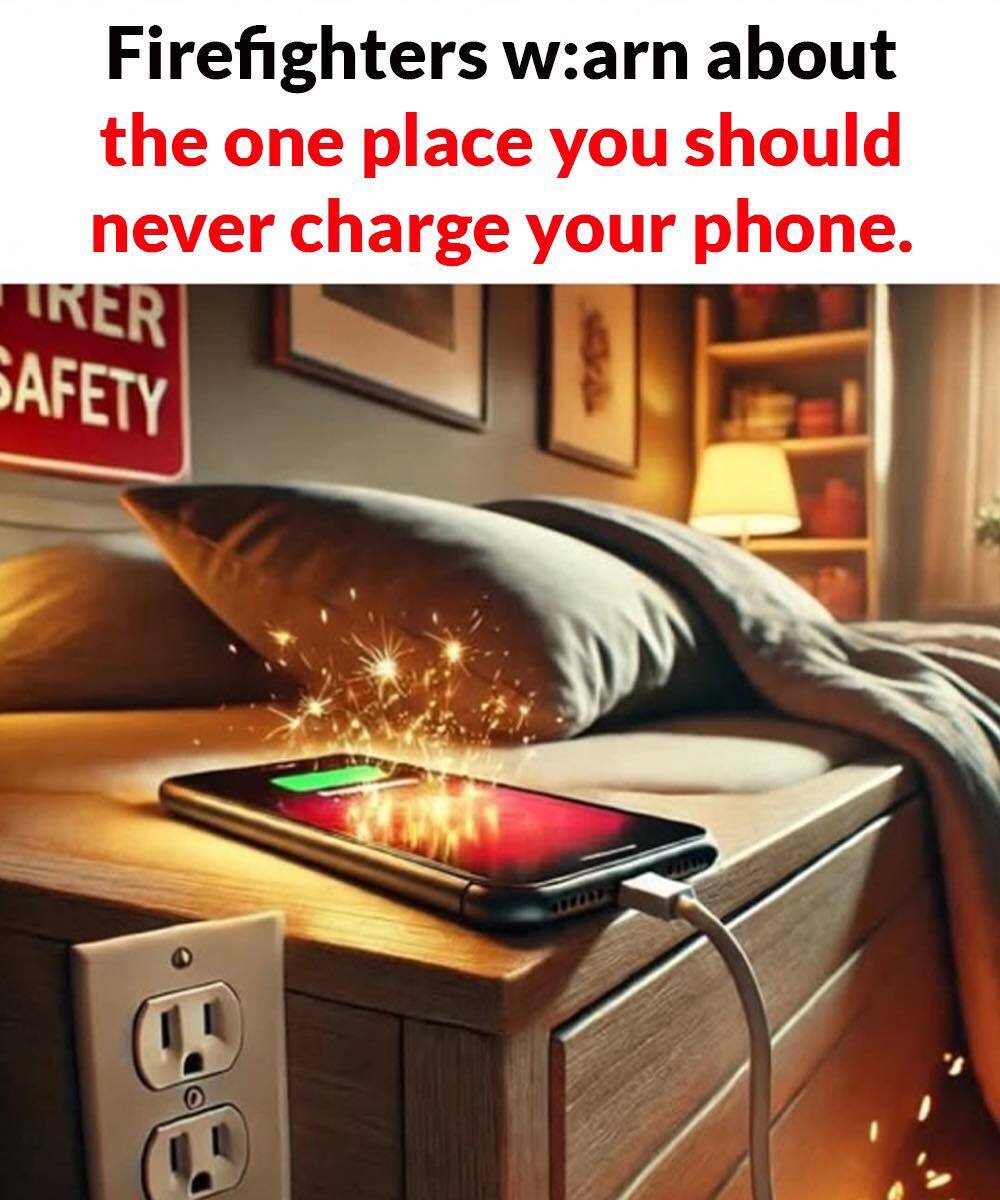As parents, one of our deepest instincts is to protect our children. We do everything we can to make sure their bedrooms, homes, and everyday routines are safe. But sometimes, dangers can lurk in the most familiar places—and it’s often the things we take for granted that carry the greatest risk. One family recently faced an unimaginable tragedy that should serve as a wake-up call for all of us.

It started like any other morning. A mother went to wake up her 14-year-old daughter, expecting another busy day of school and activities. But instead, she found her daughter unresponsive in bed. Panic set in immediately, and the family rushed her to the hospital. Despite the doctors’ best efforts, they were unable to revive her. The cause of death was heartbreaking and shocking: an electric shock.
After a thorough investigation, authorities discovered the devastating culprit—a damaged phone charger. The charger had been left plugged in overnight, hidden under her sheets where she had apparently been using it to power her phone. Beneath the warmth of the covers, the faulty charger overheated, leading to a fatal shock. When inspectors examined the scene, they found the burned remains of the charger still connected to the wall outlet.
This tragic story highlights an important but often overlooked safety rule: never use your phone while it’s charging, especially if the charger shows any signs of damage. We live in a world where phones feel like extensions of ourselves—they’re always in our hands, always within reach. But that convenience can make us forget that electronic devices, even ones we trust, can sometimes turn dangerous.
Chargers, especially cheap or worn-out ones, can overheat, fray, or malfunction. When they’re covered by blankets, pillows, or even a body sleeping nearby, the risk multiplies. Heat builds up, and a damaged cord or plug can spark or short-circuit, causing electrical burns or even deadly shocks.
Experts recommend a few simple but critical precautions to prevent similar accidents:
-
Never use your phone while it’s plugged in if the charger or cable is damaged—no matter how minor the damage may look.
-
Always use certified, high-quality chargers instead of cheap knock-offs, which often lack the safety features found in original manufacturer accessories.
-
Avoid charging devices under pillows, blankets, or bedsheets, where heat can’t escape properly.
-
Unplug chargers when they’re not in use. Even if no phone is connected, a faulty charger can still overheat and spark a fire.
-
Teach kids and teens about device safety. Many young people are unaware of the risks and may even sleep with their phones beside them, charging overnight.
-
Regularly inspect your chargers and cables for any signs of wear, fraying, or discoloration—and replace them immediately if you spot any problems.
It’s easy to assume that tragedy only strikes elsewhere—that accidents like these are rare. But the truth is, simple, everyday habits can either keep us safe or put us at risk. A charger left under a blanket, a cracked cable still in use, or a phone constantly on charge—all these tiny decisions can add up to serious consequences.
This heartbreaking incident is a reminder that vigilance matters. Take a few minutes today to inspect your family’s chargers. Talk to your kids about safe charging habits. Make sure that bedrooms, especially for younger family members, are free from hidden electrical hazards. It might feel like a small thing, but small things often make the biggest difference when it comes to safety.
Even in the places we feel most secure—our homes, our bedrooms—accidents can happen when we least expect them. Being proactive, cautious, and informed can help prevent another family from facing the kind of loss that no parent should ever have to endure.
Stay safe. Stay vigilant. Your loved ones are worth every precaution.





